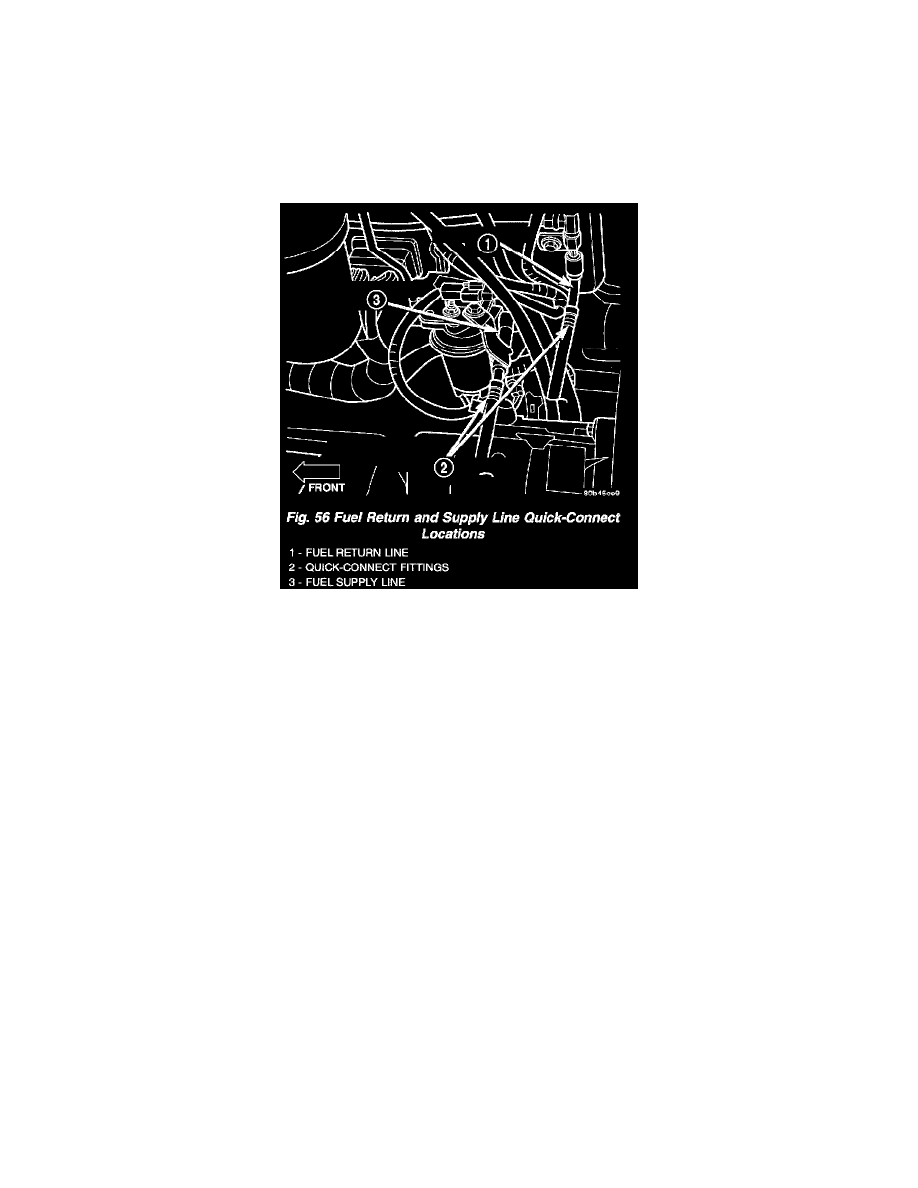RAM 2500 Truck 2WD L6-5.9L DSL Turbo VIN 7 (2001)

Pressure Drop Test:
9. Shut engine OFF and remove test gauge from inlet port test fitting. Re-attach 6828 test gauge to outlet port (Fig. 55). Start engine and record fuel
pressure. Pressure should not be more than 34 kPa (5 psi) lower than inlet port pressure test. If so, replace fuel filter.
Fuel Supply Restriction Test:
Due to very small vacuum specifications, the DRB scan tool along with the Periphal Expansion Port (PEP) Module and 0-15 psi transducer must be
used.
10. Verify transfer pump pressure is OK before performing restriction test.
Fig. 56 Fuel Return And Supply Line Quick_Connect Locations
11. Locate and disconnect fuel supply line quick-connect fitting at left-rear of engine (Fig. 56). After disconnecting line, plastic clip will remain
attached to metal fuel line at engine. Carefully remove clip from metal line. Snap same clip into fuel supply hose.
12. Install Special Rubber Adapter Hose Tool 6631 (3/8") into ends of disconnected fuel supply line.
13. Install transducer from PEP module to brass "T" fitting on tool 6631.
14. Hook up DRB scan tool to transducer.
WARNING: DO NOT STAND IN LINE WITH THE COOLING FAN FOR THE FOLLOWING STEPS.
15. Start engine and record vacuum reading with engine speed at high-idle (high-idle means engine speed is at 100 percent throttle and no load). The
fuel restriction test MUST be done with engine speed at high-idle.
16. If vacuum reading is less than 6 in/hg. (0-152 mm hg.), test is OK. If vacuum reading is higher than 6 in/hg. (152 mm hg.), restriction exists in
fuel supply line or in fuel tank module. Check fuel supply line for damage, dents or kinking. If OK, remove module and check module and lines
for blockage Also check fuel pump inlet filter at bottom of module for obstructions.
Testing For Air Leaks in Fuel Supply Side:
17. A 3-foot section of 3/8" I.D. clear tubing is required for this test.
18. Using a tire core valve removal tool, carefully remove core valve from inlet fitting test port.
19. Attach and clamp the 3/8" clear hose to fitting nipple.
20. Place other end of hose into a large clear container. Allow hose to loop as high as possible above test port.
21. The fuel transfer pump can be put into a 25 second run (test) mode if key is quickly turned to crank position and released back to run position
without starting engine.
To prevent engine from starting in this test, first remove fuel system relay (fuel injection pump relay). Relay is located in Power Distribution
Center (PDC). Refer to label under PDC cover for relay location.
Because fuel pump relay was removed, a Diagnostic Trouble Code (DTC) may have been set. After testing is completed, and relay has been
installed, use DRB scan tool to remove DTC.
22. Allow air to purge from empty hose before examining for air bubbles. Air bubbles should not be present.
23. If bubbles are present, check for leaks in supply line to fuel tank.
